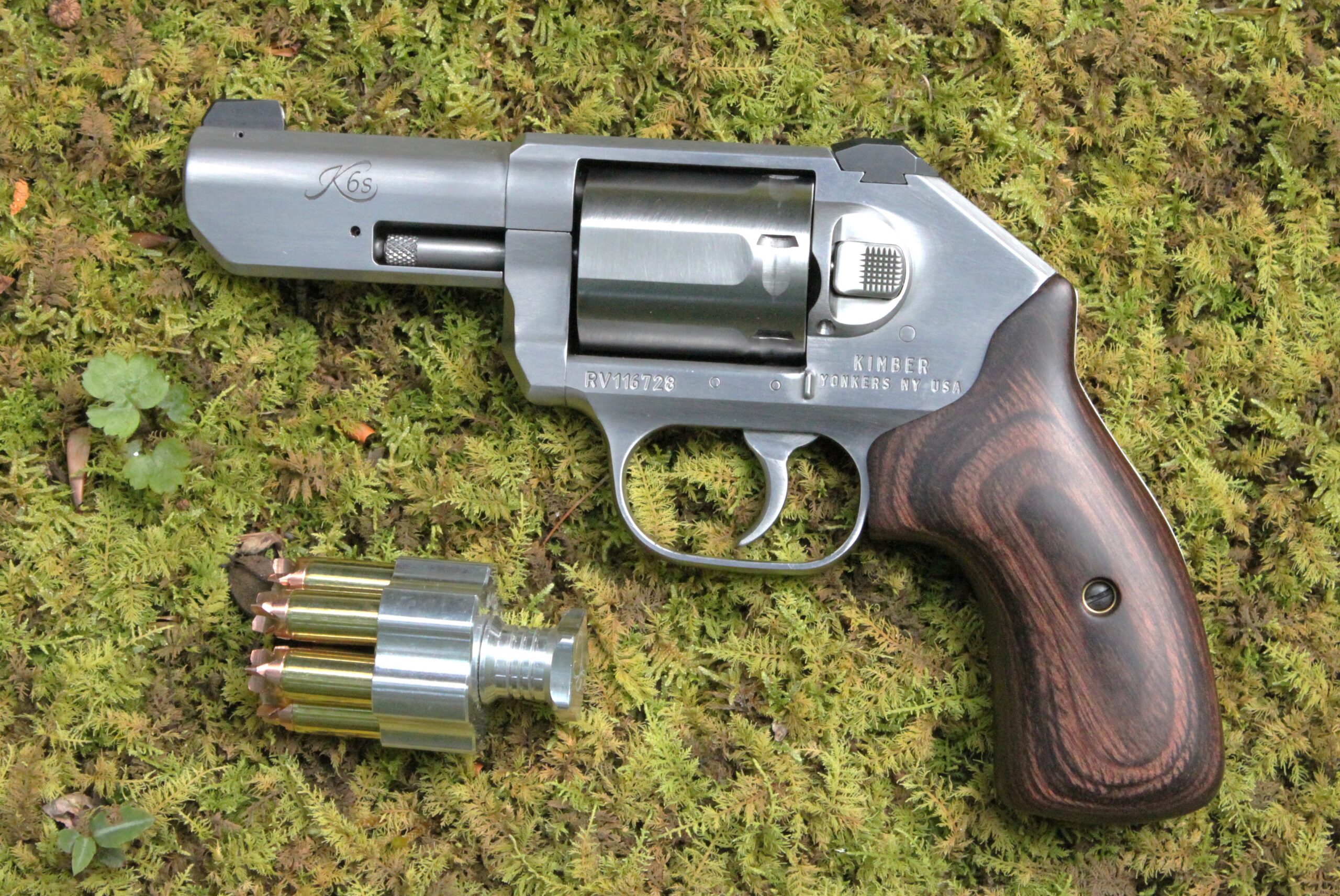
By Jim Dickson | Contributing Writer
I had been delaying the long trip into town for supplies hoping for the handgun I was supposed to review to arrive so I was very glad when Reeves Ace Hardware in Clayton, Georgia phoned to say that it had arrived.
The Kimber K6S, chambered for the .357 Magnum, is about the size of a J frame S&W but with a 6- shot cylinder. It is a very compact and lightweight stainless steel firearm, optimized for pocket or inside the waistband carry.
The test gun sported a 3-inch barrel, which is far more comfortable than a shorter 2-inch barrel for inside the waistband (IWB) carry and Kimber had also shipped one of their speed loaders and their innovative IWB holster which has a movable belt flap that lifts up when the revolver is inserted inside the waistband, and then locks down with two opposing powerful magnets that anchor it firmly in your pants when you draw.
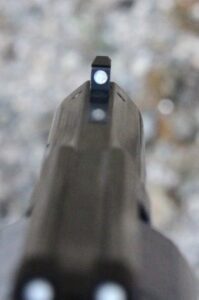
The gun weighs but 26 ounces and is 7 ½ inches long by 5 inches high and 1 7/8 inches wide at the cylinder. It is a hammerless design with a 13 pound double action trigger pull as measured by a Lyman mechanical trigger pull gauge from Brownell’s Gunsmithing Supplies. The rifling was well done and the bore was shiny, not rough like some new barrels that I have seen. A Bore Tech Bore Bright Lighting System with a 5 ¼-inch flexible Lucite tip, again from Brownell’s, enabled a better examination of the bore than conventional bore lights. When cleaning time came that polished bore cleaned up fast, quite unlike rougher new barrels that I have seen. A little Shooters Choice bore cleaner followed by a dry patch then Ballistol oil and I was done.
Since I normally fire double action revolvers in the D/A mode, the lack of a hammer is no drawback for me. It also leaves less places for sand, mud, and dirt to enter the gun improving reliability in harsh conditions. If I want to shoot single action I have single action revolvers that were designed for that type of shooting and much more efficient at it than the double action designs.
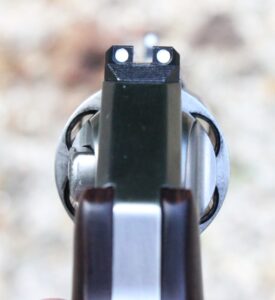
Only a hammerless revolver can be reliably fired from inside a pocket as an exposed hammer can catch the pocket lining between the hammer and the gun blunting the force needed to detonate the primer. Years ago my wife and I did the only extensive firing tests of firing guns through pockets that I have ever known of. You cannot use an automatic as the slide is caught by the pocket and cannot function freely. You also must push the revolver clear of your body before firing because the jet of gasses from the barrel/cylinder gap cuts like an acetylene torch.
There were huge thjree equal-sized holes after a shot. One for the muzzle and one on each side of the barrel cylinder gap. I tried lining a pocket with leather but the hot gasses cut through it like a hot knife through butter. The front of the coat was a tangled mess of rags where the pocket used to be.
The Kimber could not be made any lighter without making it a fierce kicker. As it is there is a stout recoil but it’s not too bad for a couple of six-shot cycles. Recoil is straight back to the top of the shooting hand where it belongs. Not all guns are so well behaved.
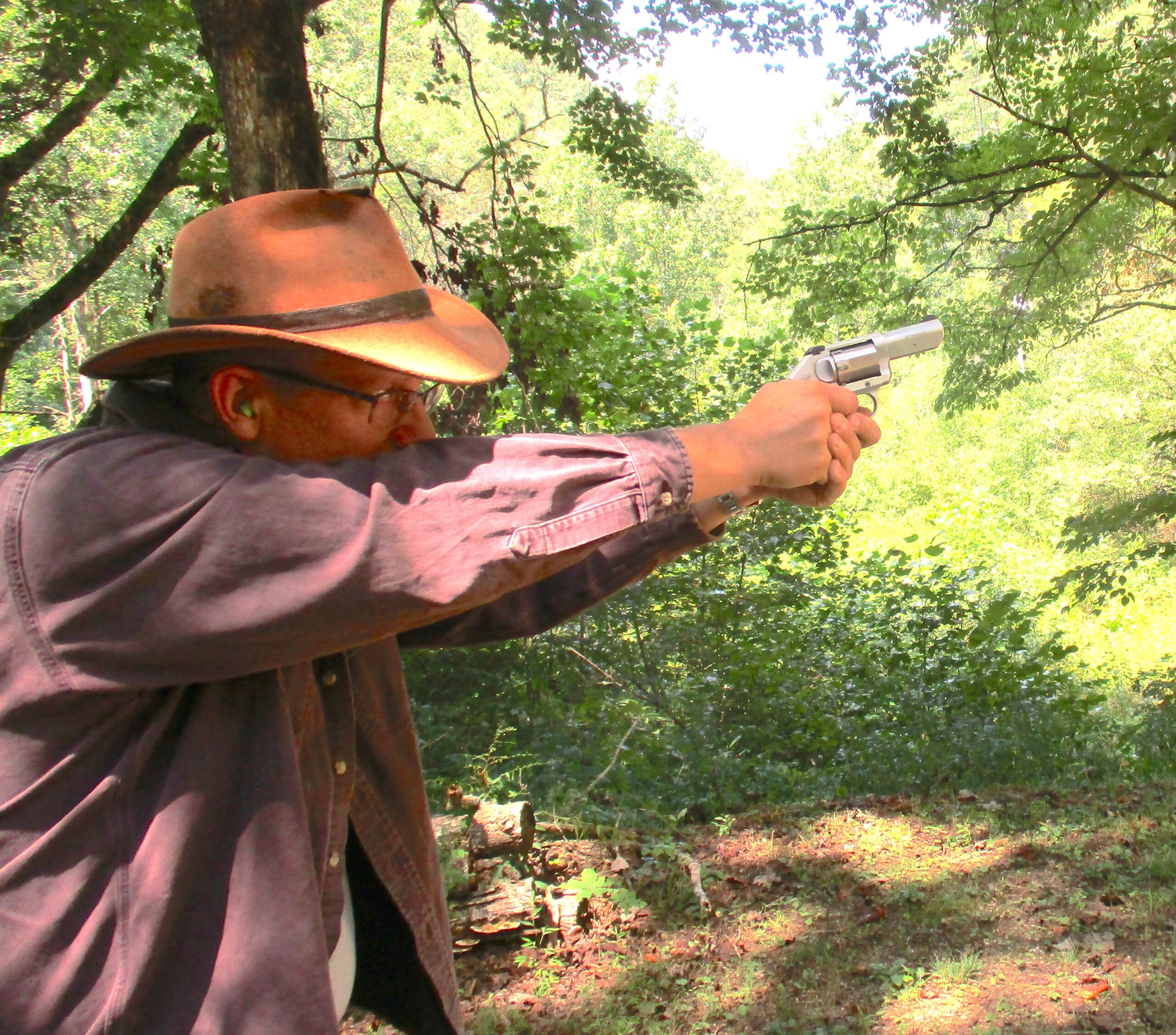
The grips are laminated walnut and they are nicely rounded, while the cylinder has flats machined in instead of the traditional flutes in a nice original design touch that instantly sets it apart from other revolvers. Bolt notches are carefully placed away from the thinnest part of the cylinder so as not to weaken it. The ejector rod is enclosed in a slot milled into the barrel under the bore. The cylinder release is a button that has to be pushed in to release the cylinder rather than being pushed or pulled forwards or backward.
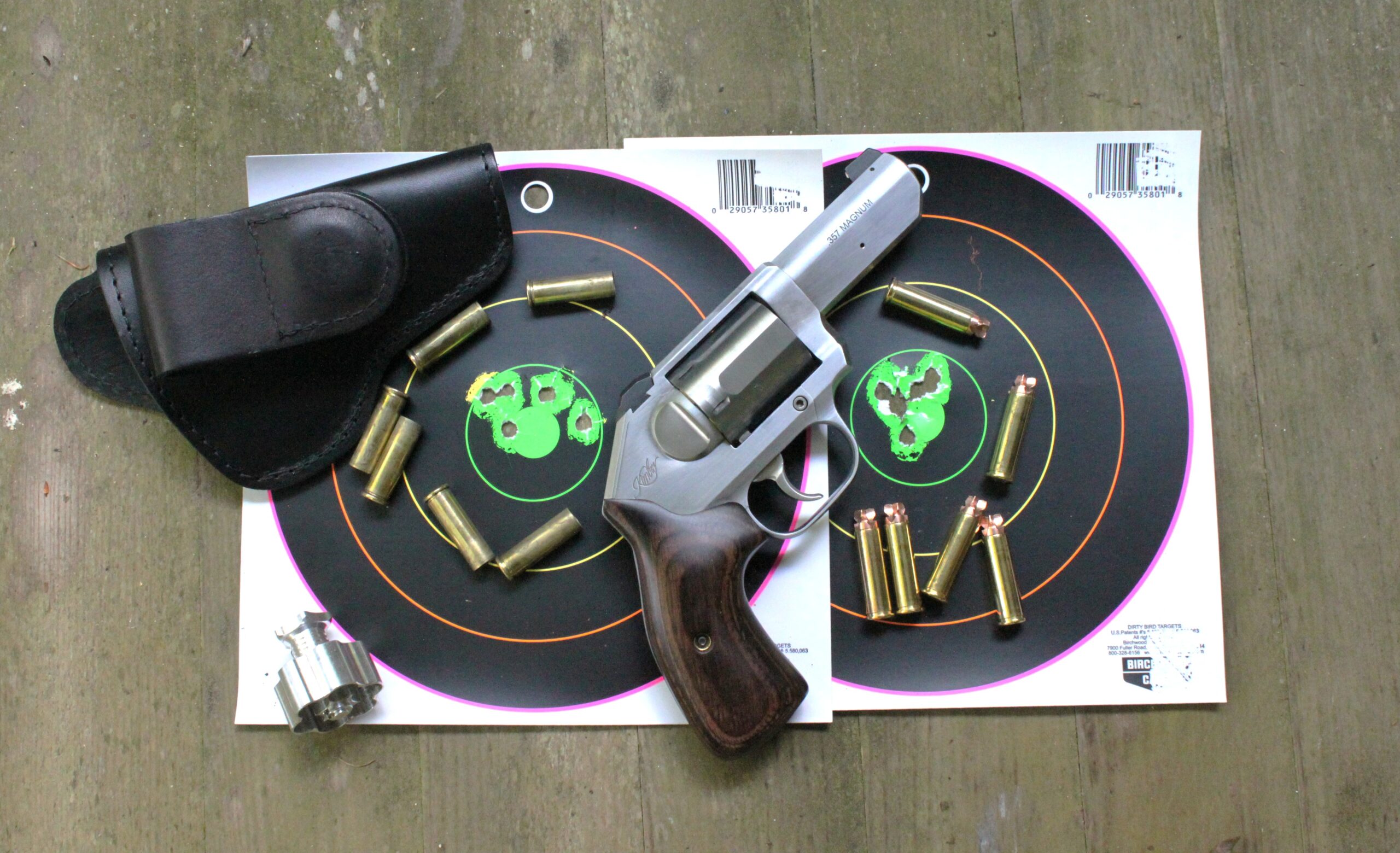
Instead of a regular screw, the sideplate is secured with an Allen head screw. Timing is perfect and the lock up of the pistol at the moment of firing is flawless. Internal parts stay fitted properly with none of the variable trigger pulls that come when recoil pushes poorly fitted parts out of alignment and the next trigger pull has to force them back into place before it can start its normal work. There is a coil mainspring, a separate firing pin, and a transfer bar. The frame is a forging for maximum strength and the guns are hand fitted and assembled, then each gun is test fired and inspected afterwards. Not every big name revolver can boast of that. Fit and finish are first class.
The sights are fixed, large, and high visibility with white dots set in black sights so that you can see them in whatever light conditions prevail at the time that you need to shoot. The gun points well and is accurate.
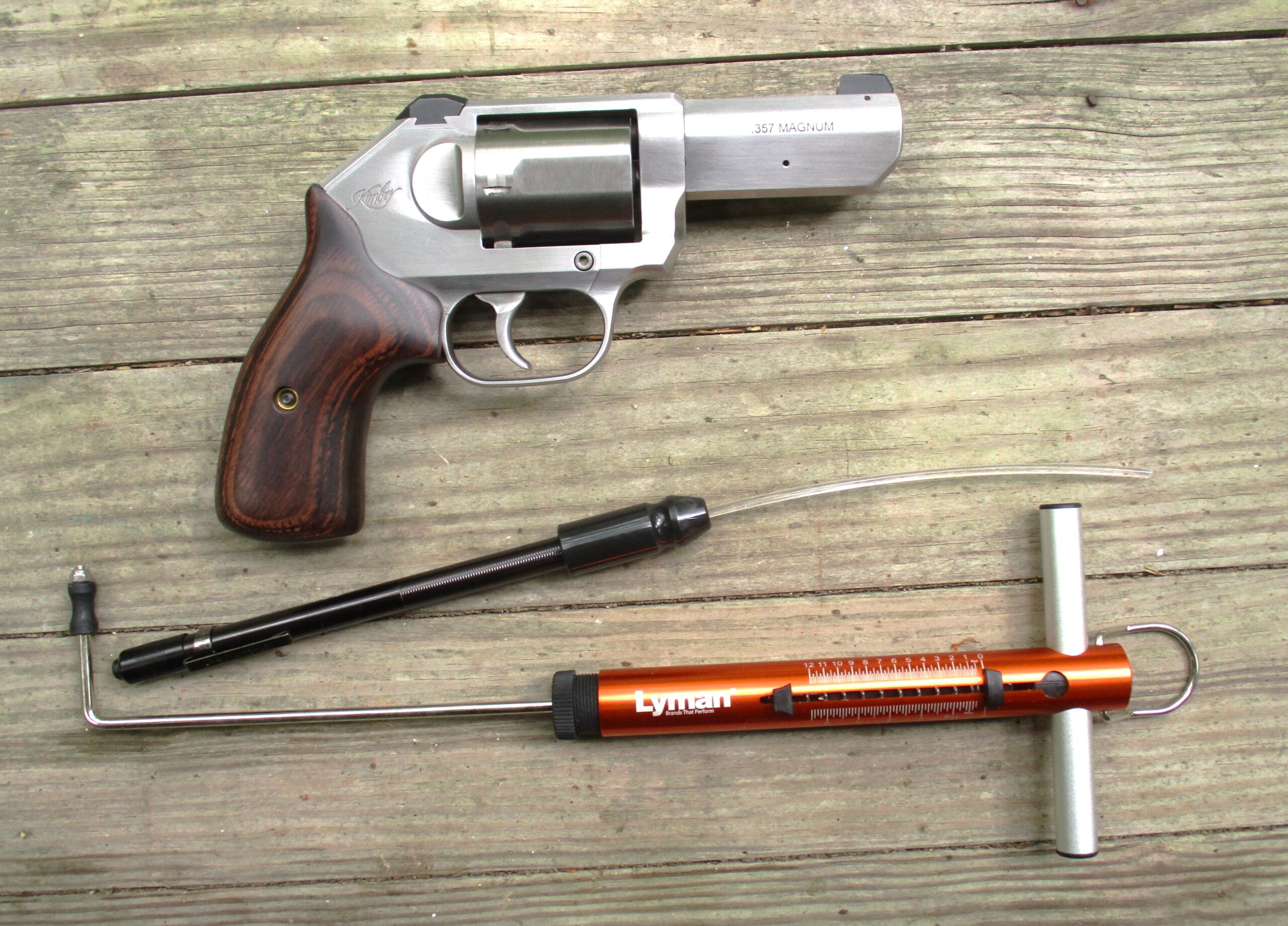
This gun was built to last. The mechanism is similar to a S&W, but the layout of the mechanism and geometry of the hammer, trigger, rebound block, and bolt stop are different from a S&W in order to make the parts meet the performance thresholds that Kimber had set for them.
I had 500 rounds of Black Hills 127-grain .357 Magnum ammunition with an advertised muzzle velocity of 1,382 FPS to test fire through the Kimber K6S. The Honeybadger is an innovative design for a deep penetrating solid bullet that leaves a big wound channel like an expanding bullet. It accomplishes this by having flutes in the bullet that are wide at the front and narrow at the rear. These flutes focus on blood and tissue like the nozzle of a garden hose forcing them outward at a rate 35% faster than the bullet’s velocity.
There is also a .38 Special 100-grain load for the Honeybadger at a reported 1,092 FPS out of a 3 inch barrel for those who want a faster recovery between shots for better rapid fire.
The need for the Honeybadger is great for your opponent in a real gunfight, as opposed to the movies, will want to take advantage of any available cover. Hollowpoints and any expanding bullet for that matter, are terrible at shooting through cover as they are designed to dump their energy fast. That means the cover gets the energy dump and the bullet may not even get past the cover. Solids go through cover and that is the real reason that military ammunition uses solid bullets. If expanding bullets worked better, the treaties would go out the window and everyone would use them. They signed those treaties only after the expanding bullet was rendered unsuitable for war by the deep penetrating solid bullets. Now we have a solid bullet that also leaves a broad wound channel like an expanding bullet giving us the best of both worlds.
The little magnum was accurate but the cumulative effects of firing 500 rounds of .357 Magnum ammunition in a short time period in such a light gun were a bit unpleasant.
The only fault I find with this revolver is the fact that they made the ejector rod the same length as their 2-inch barrel model instead of taking advantage of the longer barrel allowing for an ejector rod of sufficient length to make the fired cases completely clear the cylinder.
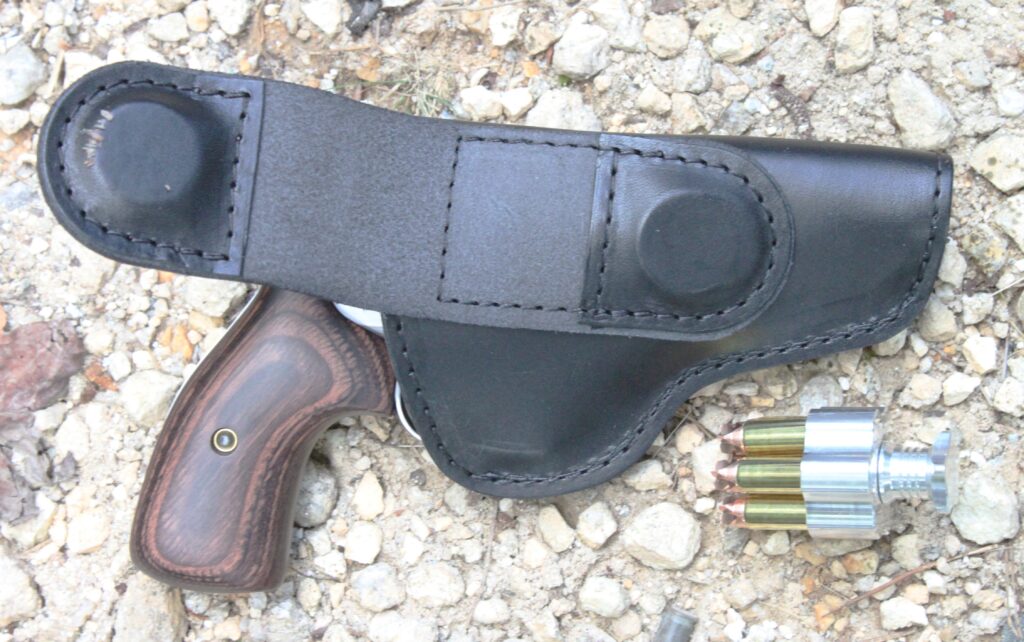
Two-inch barrel guns are slower to reload because you end up clawing the partially extracted cases the rest of the way out of the gun by hand. A longer ejector rod on the three inch barrel model would be a definite improvement and would make a big difference when you are reloading with someone shooting at you.
Sometimes it’s a difference that can determine whether you live or die. I sincerely hope they make this lifesaving improvement to the 3-inch barrel guns. If a 3-inch gun has an ejector rod of sufficient length for the fired cases to clear the chambers that alone is sufficient reason to choose the slightly longer model instead of the shorter version.
The Kimber K6S represents a good buy in a compact, lightweight, highly concealable .357 magnum revolver. If the sample gun is any indication then Colt and S&W have a serious rival to compete with in Kimber.


